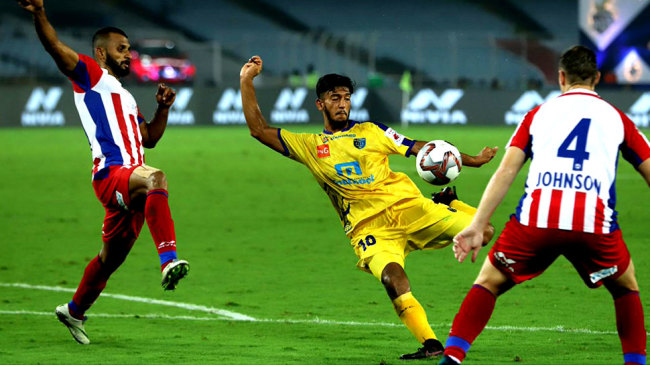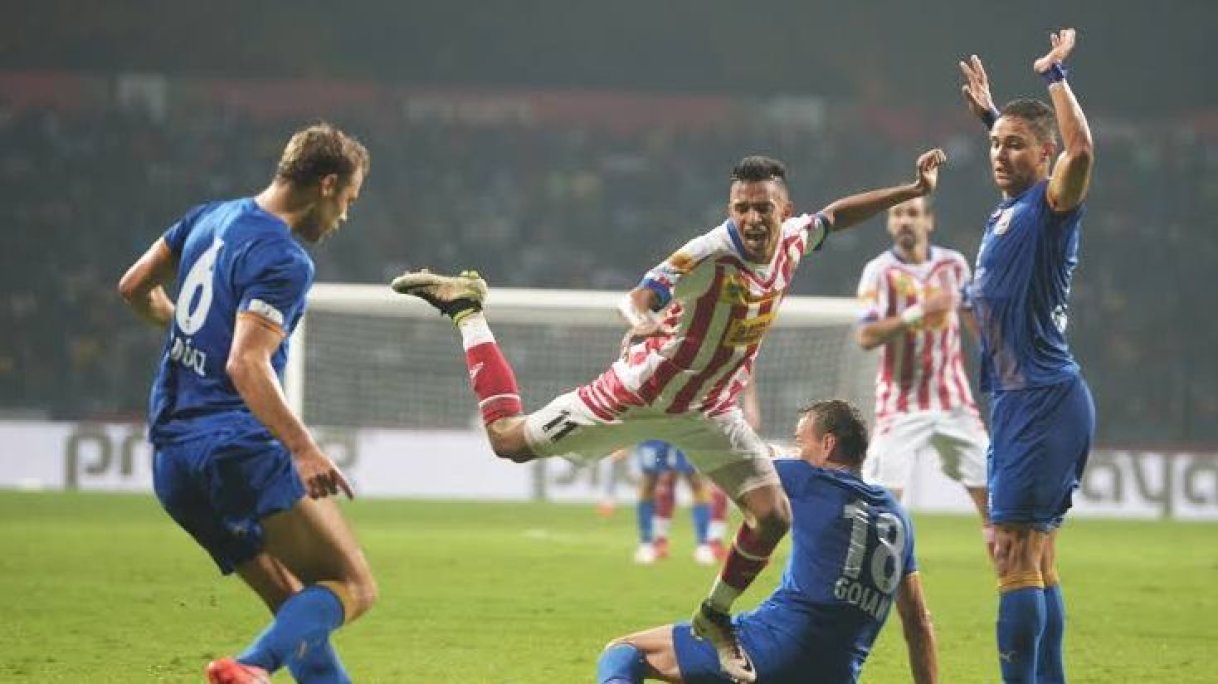The foreign landscape in Indian football has changed with the advent of ISL

It was 12th of October 2014, a tantalizing fall was already around the corner. Bengal was still afresh from one of its biggest festivities, and they were waiting for another to rock them.
Known as the cradle of Indian football, their next best reason to celebrate was the inaugural edition of the now annual extravaganza, Indian Super League (ISL).
ISL started in pompous fashion, when Fikru Teffera Lemessa bested an advancing Subrata Paul, with an absolute calm finish in a one-on-one situation. The surprise was still to come though.
Cruising towards a lopsided victory, the Kolkata concourse was left astounded with what they witnessed around the hour mark.
A 25-yard thunderbolt hammered into the top right corner of the net, from experienced Spanish campaigner, Borja Fernandez, left the audience starstruck and imbued them with immense hope that this is the harbinger of a gigantic stride in Indian football.
Despite, being a dominant sport for almost a century, the culture of signing foreigners wasn't an active practice by the Indian clubs until the late '70s. However, it all changed when the Indian throng was left captivated by the marauding Iranian duo of Majid Bishkar and Jamshed Nassiri. Playing for East Bengal initially, they left a trail of carnage everywhere they stepped.
Their arch-rivals, Mohun Bagan introduced their striking wizard, Chima Okorie in 1991 and the rest they say is history. However, to surpass all of it, with the Brazilian storm sweeping Indian football, arrived a silent lad from a grim corner of Bage.
Rejected in his first attempt at Mohun Bagan, he was recalled for his second shy at glory. He hung in there and what ensued thereafter was sheer magic. He walked on the pitch, known as Jose Ramirez Barreto.
Now there has always been few phases of players from certain countries sweeping across India and the majority of foreigners has graced the clubs riding on that tide of nationality.
After the Brazilian and African storm taking the Indian clubs by its horns, ISL heralded the arrival of Spanish footballers to the nation.
Spanning from Borja Fernandez, the first season of this yearly extravaganza that raked the echelons of Indian football, the tide encompassed veterans of the game like Josemi, Luis Garcia, Robert Pires, Italian talisman, Alessandro Del Piero and the list looks ever-glistening.
However, there was another change that was already rearing its head in the game. The choice of foreigners ranged from big club legends to legends who still had a couple of seasons left in them.
This was an exciting change in the signing of foreigners, as instead of bringing in stars, whose firepower was limited to countable offensives, the tide was turning to players, who will keep the audience gripped to their seats until the dying embers of the game.
Bigger names graced the game for the second season in the form of Helder Postiga and Graham Stack. Come the third season, the entire nation was in for an astronomical surprise.
Former Uruguayan skipper and marksman, Diego Forlan arrived in India and ran riot, until Mumbai City FC's chariot was brought to a halt by a dogged ATK defence, led by Henrique Sereno.
Lucian Goian ushered a new era of foreigners, who were marked by their burly physiques in the Indian roster.
The tide of the foreign footballers underwent a complete paradigm shift in the fourth season of ISL with the introduction of Bengaluru FC. Instead of chasing foreigners in their twilight, India was in search of youth.
India was in search of exciting prospects, who can run tirelessly for the entire 90 minutes. Like Albus Dumbledore quoted in Harry Potter that help will be given to those who seek for it, similarly India sought for youth and Voila! Youth did arrive to Indian football in style.
Batholomew Ogbeche, Eric Paartalu, Edu Garcia, Miku, Manuel Lanzarote and the new wave of foreigners was about a perfect balance of tireless prowess and experience of leading the clubs with individual sparks, in case if the entire roster fell asleep.
The performance graph of foreigners is no longer a collective one in Indian football. It isn't about how good the team will deliver, riding on the shoulders of foreigners who will have to combine brilliantly to cement a team's legacy for years to come.
It now encompasses players, who can ride roughshod over their opponents single-handedly, who can conjure magic in the drabbest moments of the game, who can unleash pile-drivers that will sail into the net, unchecked by any force that meets it and who can exude greatness at a level that is nothing short of legendary.
The competition has entered into an era where it has found several critics due to certain aspects of the fray, and it is also indulged in a major fray with the top-tier footballing bodies questioning the rules of the tournament. A few say that it is a flagrant flout of footballing rules and endless war of making the cut for the top league of the nation is continuously waged.
With the new gentry of football introduced by the new wave of foreigners, it seems like a silver lining for the extravagant brand of the league to make a bid for the nation's top tier tournament in the years to arrive.
However, as the vox populi goes, Indian football is changing and with time to come, it is changing for the good.


.png)


Leave a Reply